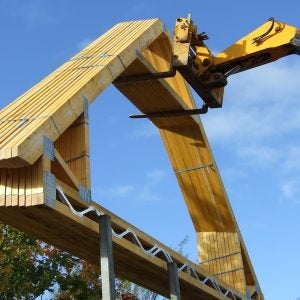The Austrian based company says its Chanovice sawmill in the Czech Republic and cross-laminated timber (CLT) facility in Schlitz, Germany have undergone optimizing internal processes.
The company said automation measures at Chanovice have reduced energy consumption and replaced heavy physical labour activities. It is also planning to use AI
to process data and achieve further energy efficiency improvements.
“We are using the challenging situation to optimize our processes so that we emerge from the crisis even stronger,” said Vlastimil Kuba, plant manager in Chanovice.
“Through ongoing optimization in all areas, downtime in the sawmill has been reduced, new drying chambers use almost 50% less energy, and reprogrammed locking systems and optimized lighting also reduce demand.”
A barcode system developed by Pfeifer sees each saw blade receive its own code, which employees can read using special software. Depending on the documented sawing performance, the blade is then either sharpened or replaced, eliminating malfunctions due to unnoticed wear.
The reliable availability of the system guarantees maximum output in the current 2-shift operation with the possibility of increasing back to 3 shifts at any time.
Meanwhile, Pfeifer is facing rising roundwood prices and difficult procurement situation. In the face of this, rail transport is proving to be a logistics advantage and in the future sawn timber will also be transported by rail.
A recently installed automatic repair machine in formwork panel production is also bringing efficiencies, with a scanner system now determining defects. An automatic system then mills out and corrects the defects by inserting new wooden patches.
More than €100m has been invested in Chanovice since 2016.
Pfeifer’s cross-laminated timber manufacturer in Schlitz, Germany is currently bridging the low market demand due by reducing production. At the same time, it is setting the course for efficient, powerful production once demand picks up again with various optimization work.
Despite the reduced construction demand, Pfeifer says the trend towards wood construction is increasing.
“From April we hope for the annual upswing in the construction sector and better filled order books again,” said Sebastian Eggel, plant manager in Schlitz.
Important adjustments have already been made by optimizing the production process. The result is reflected in faster processing times and lower wood, glue and energy consumption.
The factory has switched from diesel to electric vehicles for internal logistics, leading to considerable savings in fuel and CO2.
The transport of finished components on the factory premises was also changed. Instead of forklifts, roller and chain conveyors are used, which protect product quality and further reduce the CO2 footprint.






